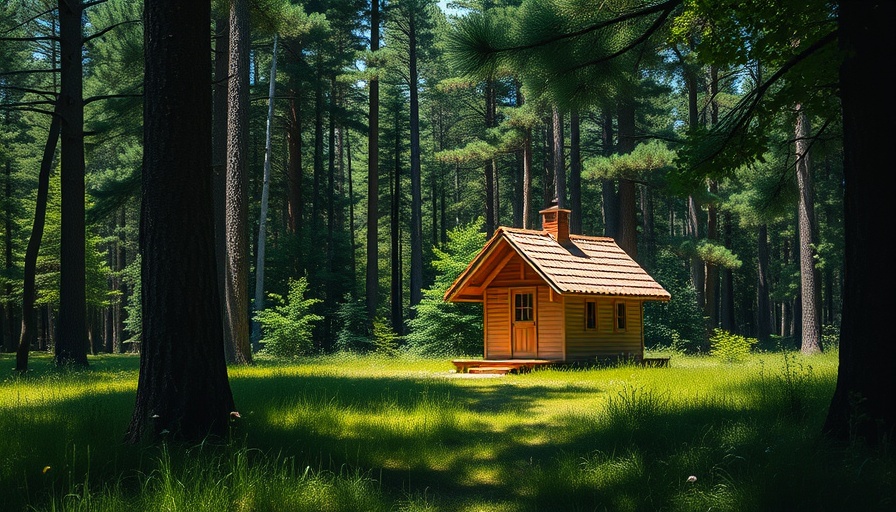
Understanding Tiny House Living: A Sustainable Future
Tiny house living is more than just a trend; it's a movement towards sustainable and intentional living. With housing prices skyrocketing and environmental concerns at an all-time high, many individuals are reconsidering their living situations. The appeal of tiny homes lies not only in their affordability but also in their environmental benefits and the simplicity they promote.
Why Tiny Homes Are Gaining Popularity
As markets like Zillow and Redfin highlight an increase in homes for sale, tiny houses are set apart by their unique appeal—minimalism and eco-friendliness. Buyers are attracted to lower overall costs, reduced energy usage, and less maintenance, making tiny houses an attractive option for many. Unlike traditional houses, tiny homes can often be built on properties that would accommodate only a small fraction of a typical home.
The Economic Impact of Tiny Homes on the Real Estate Market
In a world where the real estate market is constantly evolving, tiny homes offer a refreshing alternative to conventional housing. According to real estate trends, buyers are prioritizing smaller, more affordable properties that provide financial flexibility. These homes can often be categorized as luxury real estate on a smaller scale; they allow young homeowners to enter the market without the weight of exorbitant mortgage payments.
From Tiny House Villages to Individual Homes: A Shift in Community Living
Communities focusing on tiny house living are emerging across the country, combining affordability with community-focused living. These villages can offer shared resources and communal spaces while cultivating a sense of belonging among residents. As a result, people find meaningful social connections, an aspect often lacking in larger properties and traditional housing cultures. So, for real estate agents and home buyers alike, engaging with these clustered living environments is increasingly relevant.
Challenges and Misconceptions About Tiny Homes
Despite their advantages, tiny homes often come with challenges. Some skeptics argue that lifestyles cannot conform to such small spaces, citing limitations in storage and personal privacy. Others express concerns over zoning laws and the availability of land for tiny homes. However, it is essential to challenge these misconceptions as innovations in design and accessibility continue to evolve these living solutions.
The Future of Tiny Living: Market Trends and Predictions
As we think about the future, it's clear that the tiny home movement is not a passing fad. With climate change forcing many to reconsider their living choices, the space-saving sustainability offered by tiny homes will likely set trends for future construction. Moreover, as remote work becomes more normalized, many urban dwellers may seek affordable temporary residences accessible through real estate listings, such as vacation rentals, before committing to larger properties. As a result, tiny homes may impact both suburban and urban real estate markets significantly.
How to Get Started with Tiny Home Living
If you're considering a transition to a tiny home, there are numerous avenues to explore. It's vital to research different models and builders through platforms like Trulia and ZipRealty. Understanding local zoning regulations and financial implications like real estate taxes will help in making informed decisions. Communities often have workshops or resources that provide insight into the logistics of tiny living—making the transition smoother and more feasible.
Whether you’re a seasoned realtor or an aspiring buyer, keeping an eye on the tiny home trend could lead you to new opportunities and insights in the ever-changing real estate landscape. With their environmental benefits, affordability, and minimalistic lifestyle, tiny homes represent a promising future in housing solutions.
The growing interest in tiny home communities reinforces the shift towards sustainable living. Explore options, and you might find a unique opportunity to be part of this exciting movement.
 Add Row
Add Row  Add
Add 




Write A Comment